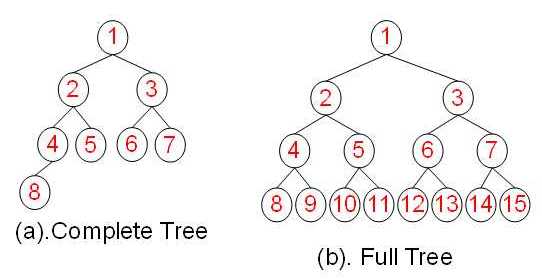Golang : container/heap
Heap是什麼
Wiki: https://zh.wikipedia.org/wiki/%E5%A0%86%E7%A9%8D
堆積(Heap)是電腦科學中的一種特別的完全二元樹。 若是滿足以下特性,即可稱為堆積:「給定堆積中任意節點P和C,若P是C的母節點,那麼P的值會小於等於(或大於等於)C的值」。 若母節點的值恆小於等於子節點的值,此堆積稱為最小堆積(min heap); 反之,若母節點的值恆大於等於子節點的值,此堆積稱為最大堆積(max heap)。 在堆積中最頂端的那一個節點,稱作根節點(root node),根節點本身沒有母節點(parent node)。

container/heap 提供的方法
heap包為實現了 heap.Interface 的類型提供了堆方法:Init/Push/Pop/Remove/Fix。 container/heap 為最小堆,
即每個節點的值都小於它的子樹的所有元素的值(A heap is a tree with the property that each node is the minimum-valued node in its subtree)。
heap:
package heap
// ...
// Note that Push and Pop in this interface are for package heap's
// implementation to call. To add and remove things from the heap,
// use heap.Push and heap.Pop.
type Interface interface {
sort.Interface
Push(x any) // add x as element Len()
Pop() any // remove and return element Len() - 1.
}
sort:
package sort
// An implementation of Interface can be sorted by the routines in this package.
// The methods refer to elements of the underlying collection by integer index.
type Interface interface {
// Len is the number of elements in the collection.
Len() int
// Less reports whether the element with index i
// must sort before the element with index j.
//
// If both Less(i, j) and Less(j, i) are false,
// then the elements at index i and j are considered equal.
// Sort may place equal elements in any order in the final result,
// while Stable preserves the original input order of equal elements.
//
// Less must describe a transitive ordering:
// - if both Less(i, j) and Less(j, k) are true, then Less(i, k) must be true as well.
// - if both Less(i, j) and Less(j, k) are false, then Less(i, k) must be false as well.
//
// Note that floating-point comparison (the < operator on float32 or float64 values)
// is not a transitive ordering when not-a-number (NaN) values are involved.
// See Float64Slice.Less for a correct implementation for floating-point values.
Less(i, j int) bool
// Swap swaps the elements with indexes i and j.
Swap(i, j int)
}
由於 heap.Interface 包含了 sort.Interface ,所以,目標類型需要包含如下方法:Len/Less/Swap ,Push/Pop。
container/heap 可用在哪
container/heap包可以用來構造優先順序佇列。
https://go.dev/play/p/77zrF3PurO4
// This example demonstrates a priority queue built using the heap interface.
package main
import (
"container/heap"
"fmt"
)
// An Item is something we manage in a priority queue.
type Item struct {
value string // The value of the item; arbitrary.
priority int // The priority of the item in the queue.
// The index is needed by update and is maintained by the heap.Interface methods.
index int // The index of the item in the heap.
}
// A PriorityQueue implements heap.Interface and holds Items.
type PriorityQueue []*Item
func (pq PriorityQueue) Len() int { return len(pq) }
func (pq PriorityQueue) Less(i, j int) bool {
// We want Pop to give us the highest, not lowest, priority so we use greater than here.
return pq[i].priority > pq[j].priority
}
func (pq PriorityQueue) Swap(i, j int) {
pq[i], pq[j] = pq[j], pq[i]
pq[i].index = i
pq[j].index = j
}
func (pq *PriorityQueue) Push(x interface{}) {
n := len(*pq)
item := x.(*Item)
item.index = n
*pq = append(*pq, item)
}
func (pq *PriorityQueue) Pop() interface{} {
old := *pq
n := len(old)
item := old[n-1]
item.index = -1 // for safety
*pq = old[0 : n-1]
return item
}
// update modifies the priority and value of an Item in the queue.
func (pq *PriorityQueue) update(item *Item, value string, priority int) {
item.value = value
item.priority = priority
heap.Fix(pq, item.index)
}
PriorityQueue 本質上是個 *Item 陣列,其Len/Less/Swap是比較常見的陣列用來sort需要定義的函數,而Push、Pop則是使用數位來插入、的方法。 PriorityQueue 還提供了update方法。 注意由於通常希望優先順序佇列Pop出來的是優先順序最高的元素,所以Less方法是反著寫的。
定義了以上方法以後, PriorityQueue 就具備了使用 container/heap 包的條件。
如下代碼,先從items map出發定義了一個pq陣列,長度為hash的size,並調用 heap.Init 初始化pq; 之後向佇列中增加了一個優先順序為1的元素,並更新該元素的佇列; 最後從佇列中依此Pop,可見元素在Pop時是依照優先順序排序的。
// This example creates a PriorityQueue with some items, adds and manipulates an item,
// and then removes the items in priority order.
func main() {
// Some items and their priorities.
items := map[string]int{
"banana": 3, "apple": 2, "pear": 4,
}
// Create a priority queue, put the items in it, and
// establish the priority queue (heap) invariants.
pq := make(PriorityQueue, len(items))
i := 0
for value, priority := range items {
pq[i] = &Item{
value: value,
priority: priority,
index: i,
}
i++
}
heap.Init(&pq)
// Insert a new item and then modify its priority.
item := &Item{
value: "orange",
priority: 1,
}
heap.Push(&pq, item)
pq.update(item, item.value, 5)
// Take the items out; they arrive in decreasing priority order.
for pq.Len() > 0 {
item := heap.Pop(&pq).(*Item)
fmt.Printf("%.2d:%s index:%d \n", item.priority, item.value, item.index)
}
}
// Output:
// 05:orange index:-1
// 04:pear index:-1
// 03:banana index:-1
// 02:apple index:-1